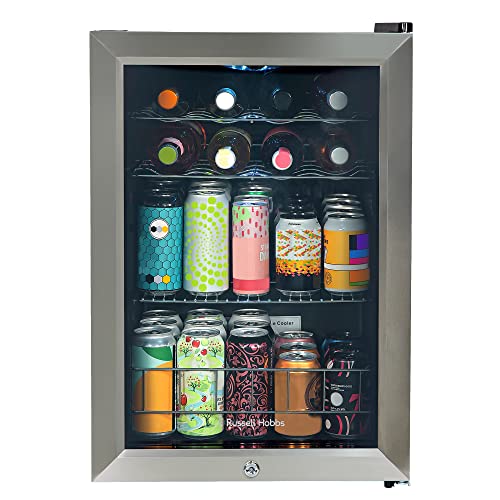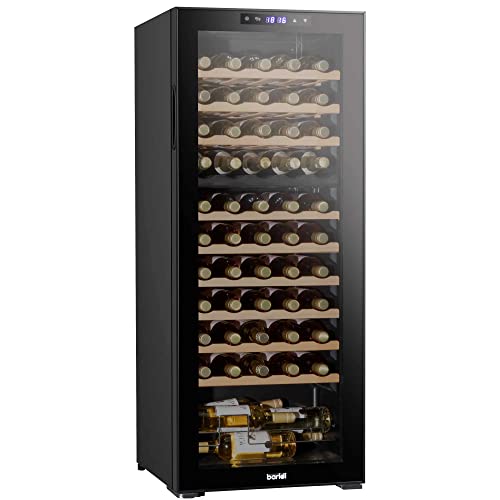Energy Efficient Wine Storage With a Wine Refrigerator Built in
Keep your
wine fridge rack at optimal temperatures to serve or for long-term storage by using this energy efficient built in wine refrigerator. Dual temperature control zones allow you to store red and white wines separately to preserve their full flavors.
Expertly designed to blend seamlessly into your cabinetry, these units can be installed under countertops for easy access to a refreshing glass of Riesling after dinner. But, they need proper ventilation and clearance in order to let heat escape properly.
Capacity and Size
A wine refrigerator that is built-in is a stylish and sleek alternative to large freestanding units. Engineered with front vents and a recessed design, these wine coolers can be recessed into cabinetry or underneath counters to create a seamless design. They also provide an easier storage solution, allowing you to easily change from cold to wine drinks.
These wine refrigerators can accommodate up to 368 bottles and are ideal for serious collectors who have a large collection. They are designed to safeguard your wine for a long time by ensuring that they have ample storage space and precise climate control. These units are perfect for garages, basements or spaces that are not air-conditioned, and where a robust and durable storage space is needed.
The capacity to cool wine refrigerators is typically measured by the amount of standard Bordeaux-style bottles can be accommodated. It is also important to consider whether your collection of wine includes other bottle sizes, like Champagne or Burgundy. This will affect the capacity of your bottle, since these bottles require more space than the Bordeaux standard bottle. Some wine refrigerators include shelves that can be adjusted to allow to store different sizes of bottles.
You'll also need to consider the location you'd like to place it. If you're planning to install it into existing cabinetry it is crucial to remember that you will need adequate space on the left and right sides of the unit, as well as 6 inches of space at the back. This is to ensure that the heat released by the wine fridge can escape easily and prevent it from overheating.
Think about installing one of these high end wine fridges to the kitchen if you're planning to invest in an expensive model with an exquisite stainless-looking finish. These models will add a touch of elegance to your home with their sleek and elegant door designs. These refrigerators are also available in larger sizes and are ideal for those who enjoy entertaining and large gatherings. With a variety of features, such as dual-zone cooling and UV protection, these wine refrigerators are perfect for those who want to elevate their hosting skills up to the next level.
Ventilation
If a wine refrigerator isn't properly ventilated, hot and humid air will accumulate inside, and the appliance may overheat. Ventilation is essential because it helps the cooler maintain a consistent humidity and temperature while also protecting against variations in temperature which could harm the bottles or alter the taste of the wine. To make sure that your wine refrigerator has the proper ventilation system make sure to check the unit after it has been in operation for a few hours. If the fridge is cool to the touch then it is well-ventilated.
Most wine refrigerators come with an internal temperature sensor that monitors the temperature and alerts you when it is out of range. Some models have dual temperature-controlled zones to allow you to store different types of wines at ideal serving temperatures.
The ideal temperature to store wine is between 55 and 66 degrees Fahrenheit. This will prevent the development of cork rot or other issues that can damage your valuable collection. Some models even have an indicator light that lights when the interior temperature is lower than your preferred setting.
A built-in wine refrigerator could be the best option for your collection, depending on the storage requirements you have. These units can be positioned seamlessly under countertops in the kitchen or in bar areas to offer easy access for guests. Some models have front vents and can be set close to your cabinets for a an elegant look.
It is essential to take measurements of the space and into account the cabinet width prior to installing a wine refrigerator. The fridge should be at least a few inches from the wall on all sides to permit adequate ventilation. If a wine refrigerator is placed against a wall or cabinet, it can clog the vents and stop heat from escaping. Freestanding wine refrigerators have a rear or side vents to distribute heat efficiently.
Installation
A
wine refrigerator built in can be a stylish and practical bar to your home. There are few things to be aware of when choosing the best spot for your new appliance.
The first thing to do is make sure that your new cooler has enough space for ventilation. If a wine refrigerator is not adequately ventilated, it will overheat, which will eventually reduce its lifespan.
Also, keep your wine fridge out of direct sunlight or other sources of heat. This will safeguard your collection from damaging ultraviolet rays of the sun and let it cool efficiently.
The last thing to do is ensure that your wine fridge is not too near another appliance that produces heat, such as dishwashers. This could cause your wine to be damaged or have unpredictability temperature fluctuations.
Wine refrigerators are available in two different types that are built-in and freestanding. Freestanding wine fridges offer more flexibility in terms of installation, while built-in units seamlessly integrate into kitchen cabinets. Both are available in various capacities and styles, so you can find the ideal fit for your home.
You should determine the space in which you're planning to put your new wine refrigerator to make sure that it can ventilate properly. If possible, try to leave some inches of space around the unit for ventilation purposes. Make sure that the door can open completely. If it can't then the racks inside are difficult to access.
Certain models also have particular temperature preferences. For instance, certain wine refrigerators may store red wines at the ideal serving temperature of 55 degrees Fahrenheit while others are suitable for storage that is long-term. Depending on your needs you might want to consider buying a dual-zone refrigerator, which allows you to store long-term wines at the appropriate serving temperature and serve chilled drinks in the other zone.
If you're planning to put in a wine refrigerator built in it, make sure you've follow the manufacturer's guidelines carefully to ensure that your new cooler is installed correctly. After it's been installed, you should wait several hours before turning it on so that the coolant has time to settle.
Energy Efficiency
In the present era of expensive energy, it's important to be aware of the energy consumption of every appliance. When buying a built in wine refrigerator, you should look for models that have an energy efficiency rating or Energy Star certification. This indicates that the
wine fridge large fridge has been equipped with the latest cooling technology and insulation to help save energy.
A wine refrigerator must cool the entire interior of the fridge and also any bottles stored inside. A larger wine fridge with a higher bottle capacity will use more energy than a smaller model. Also, the temperature of the room may affect the power consumption of the fridge since it has to work harder to keep an interior temperature that is cooler.
To cut down on the amount of energy used by your wine fridge, ensure that it's always full of wine. It may seem counterintuitive but a wine refrigerator that is filled with sealed, cold bottles won't have to work as hard to maintain its internal temperature. The fact that you keep your shelves and bottles in the correct order can also help your wine refrigerator run more efficiently. If you arrange your bottles horizontally, they will chill quicker than if you put them upright.
A new model that has the latest cooling technology can also help you cut down on the energy consumption of your wine refrigerator. The most recent models are more energy efficient than previous models and can save you as much as PS100 per year on energy costs.

When looking for a brand new wine refrigerator, opt for one that features a low-energy compressor cooling system. This kind of refrigerator is eco-friendly and uses less energy than wine refrigerators equipped with a powerful compressor system. Consider a thermoelectric fridge. These
good wine fridge coolers cool the inside using the Peltier-effect, which consumes significantly less energy than compressor-based units. However they are more prone to ambient temperatures and require some maintenance. Choose a brand that has an established track record of making reliable high-quality wine refrigerators. They're likely to create a fridge with an energy efficient cooling system and quiet operation.


 When looking for a brand new wine refrigerator, opt for one that features a low-energy compressor cooling system. This kind of refrigerator is eco-friendly and uses less energy than wine refrigerators equipped with a powerful compressor system. Consider a thermoelectric fridge. These good wine fridge coolers cool the inside using the Peltier-effect, which consumes significantly less energy than compressor-based units. However they are more prone to ambient temperatures and require some maintenance. Choose a brand that has an established track record of making reliable high-quality wine refrigerators. They're likely to create a fridge with an energy efficient cooling system and quiet operation.
When looking for a brand new wine refrigerator, opt for one that features a low-energy compressor cooling system. This kind of refrigerator is eco-friendly and uses less energy than wine refrigerators equipped with a powerful compressor system. Consider a thermoelectric fridge. These good wine fridge coolers cool the inside using the Peltier-effect, which consumes significantly less energy than compressor-based units. However they are more prone to ambient temperatures and require some maintenance. Choose a brand that has an established track record of making reliable high-quality wine refrigerators. They're likely to create a fridge with an energy efficient cooling system and quiet operation.